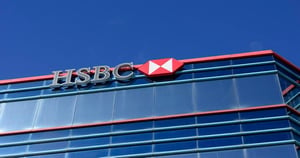Deliveroo PLC (ROO.L), a leading player in the internet retail industry, has carved out a significant niche in the consumer cyclical sector. Established in 2013 and headquartered in London, Deliveroo’s online food delivery platform has expanded its reach across multiple countries, including the UK, Ireland, France, and several others in Europe, Asia, and the Middle East. Despite its vast operational network, the company currently faces a complex financial landscape that merits careful investor consideration.
Deliveroo’s market capitalisation stands at an impressive $2.54 billion. The stock price hovers around 175.3 GBp, with negligible movement at present, indicating a stabilised position within its 52-week range of 113.10 to 175.70 GBp. This stability may offer comfort to investors wary of volatility, yet the company’s valuation metrics present a more intricate picture. Notably, the forward P/E ratio is an astronomical 1,923.84, suggesting market expectations of significant future earnings growth, albeit with a considerable degree of uncertainty inherent in such a high figure.
The company’s revenue growth of 3.40% demonstrates resilience in expanding its top line, but the absence of net income and a static earnings per share (EPS) of 0.00 highlight profitability challenges. Deliveroo’s return on equity is slightly negative at -0.02%, reflecting the challenges in converting equity investments into profit. However, the company’s free cash flow of £52.125 million provides a silver lining, indicating some degree of financial flexibility.
As a non-dividend-paying stock, Deliveroo does not currently offer income-seeking investors any yield, with a payout ratio of 0.00%. This decision might be indicative of the company’s strategy to reinvest earnings into growth initiatives rather than distributing profits to shareholders.
Analyst sentiment towards Deliveroo shows a mixed picture. With 2 buy ratings, 10 hold ratings, and no sell ratings, analysts appear cautiously optimistic. The average target price of 180.83 GBp suggests a modest potential upside of 3.16% from the current price, aligning with the cautious market sentiment.
Deliveroo’s technical indicators provide further context for potential investors. The stock’s 50-day and 200-day moving averages sit at 156.65 and 145.01 respectively, indicating a positive short-term trend. However, the Relative Strength Index (RSI) of 31.33 suggests that the stock is approaching oversold territory, which could potentially signal a buying opportunity if investors anticipate a price rebound. The Moving Average Convergence Divergence (MACD) and Signal Line metrics further suggest bearish momentum, warranting close monitoring for signs of trend reversals.
Deliveroo’s journey in the competitive landscape of online food delivery is characterised by both opportunities and challenges. The company’s extensive geographic footprint and robust market capitalisation are compelling, yet the lack of profitability, high forward P/E, and mixed analyst ratings suggest that potential investors should approach with a balanced perspective. As Deliveroo navigates the complexities of its market environment, its future performance will likely hinge on its ability to translate revenue growth into sustainable profit, a factor that remains at the forefront of investor scrutiny.


































